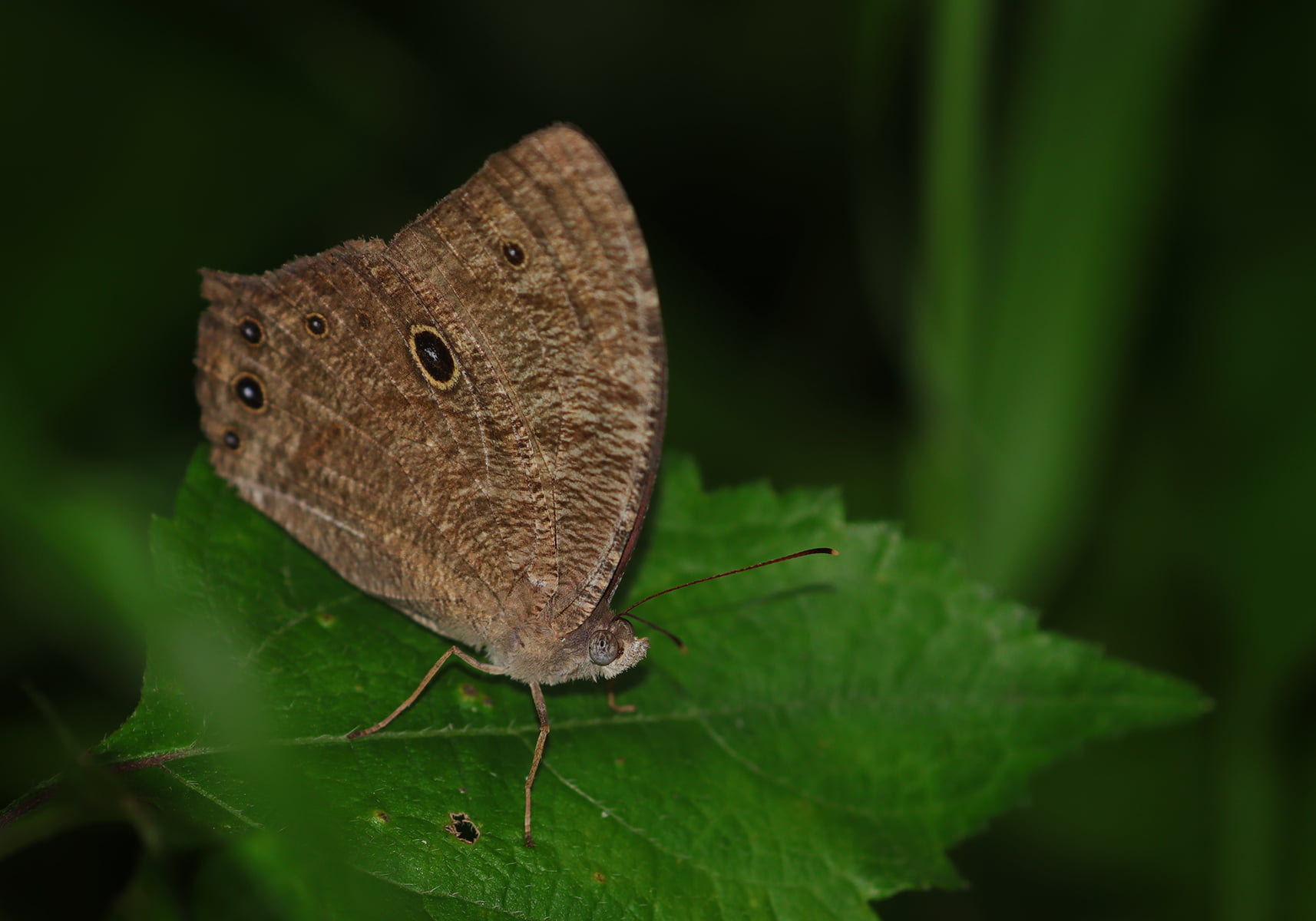Melanitis leda has falcate-shaped wings (crescent moon), the upper wing side is dark brown with large black patches on the subapical, two black spots surrounded by orange-brown with white in the center. The underside of the wings is yellowish or gray with fine lines dark brown, the color varies depending on the wet or dry season.
Larva: larvae of Melanitis leda measuring 3 – 3.1 mm, cylindrical in shape, whitish in color with a body covered with black setae in the lateral and dorso-lateral areas. The head is black, there are a pair of short, rounded horns. In the final stage the instars their color are yellowish to lime green, the head is black with green spots and white stripes, the horns on the head are red to reddish brown. Body length is about 45 – 51 mm.
Pupa: Pupa of Melanitis leda is yellowish green, smooth surface, looks angled, there are several dark lines on the wing pads. The size is about 21-22 mm.


